Arshile Gorky Study for Agony circa 1946-1947 pencil and crayon on Strathmore wove paper 12 1/2 x 19 in. (33 x 48.3 cm) Signed “A. Gorky” by Agnes Gorky Fielding, the artist’s wife, lower right. This work is recorded in the Arshile Gorky Foundation Archives under number D1477.
Provenance Allan Stone Galleries Inc., New York Donald Morris Gallery, Detroit Steingrim Laursen, Copenhagen, by 1981 Louisiana Museum of Modern Art, Humlebaek Private collection (by descent from the above) Exhibited Los Angeles, Everett Ellin Gallery, Arshile Gorky Forty Drawings from the Period 1929 through 1947, April 9 - May 5, 1962 New York, The Solomon R. Guggenheim Museum, Arshile Gorky 1904-1948: A Retrospective, April 24 – July 19, 1981; Dallas, Dallas Museum of Fine Arts, September 11 – November 8, 1981; Los Angeles, Los Angeles County Museum of Art, December 3, 1981 – February 28, 1982 Marseille, Centre de la Vieille Charité, La Planète Affolée: Surréalisme: Dispersion et Influences: 1938 – 1947, April 12 – June 30, 1986 Gran Canaria, Centro Atlántico de Arte Moderno, El Surrealismo entre Viejo y Nuevo Mundo, December 4, 1989 – February 4, 1990 Literature Arshile Gorky Forty Drawings from the Period 1929 through 1947, Everett Ellin Gallery, Los Angeles, 1962, cat. no. 31 (illustrated) D. Waldman, Arshile Gorky 1904 - 1948: A Retrospective, Solomon R. Guggenheim Museum, New York, 1981, cat. no. 216 (illustrated) B. Noël, La Planète Affolée: Surréalisme: Dispersion et Influences: 1938 – 1947, Centre de la Vieille Charité, Marseille, France, 1986, cat, no. 106 (illustrated) J. M. Bonet, Centro Atlántico de Arte Moderno, Las Palmas de Gran Canaria, El Surrealismo entre el Viejo y Nuevo Mundo, 1989, n.p. (illustrated) Catalogue Essay Arshile Gorky’s personal life had been marred by unspeakable confrontations with hardship, however, punctuated with a remarkable series of re-inventions that ultimately came to shape his artistic practice. Gorky witnessed the atrocities of the Armenian genocide firsthand, escaping to nearby Russia before making a long passage to America; shedding his birth name and intentionally casting an air of mystery over his life and training as an artist. The next twenty-five years saw his effortless grasp of a variety of artistic styles before arriving at a point of maturity in the early 1940s. In the decade that followed, tragedy would once again mar his personal life in the form of infidelity, fire, and paralysis and Gorky ended his life in 1948. While the title of the present lot encompasses the period in Gorky’s life in which it was created, aesthetic content challenges title. Study for Agony, 1946-1947, exemplifies Gorky’s supremely confident hand in the twilight of his artistic command, and reigns as an indelible stamp of Abstract Expressionist mastery. Upon his arrival in America, Gorky almost immediately began to fabricate his history with a flair for the theatrical, claiming he was a cousin of Soviet writer Maxim Gorky(regardless of the fact that his cousin’s name itself was a pseudonym). In addition, his wild claims extended to his training as an artist. Supposedly, Kandinsky himself had taught the young artist to paint, and Gorky had already made a name for himself in the salons of Paris. These creative assertions were perhaps a result of his American reinvention, and he wasted no time in reforming his identity. Few had reason to doubt Gorky’s claims, as his self-taught style began to appear as advanced as a professional’s own. He spent his twenties developing his talents through mimicry, adopting the forms and arrangements of a series of established artists. In the way that a devoted apprentice learns to duplicate the work of his master, so Gorky was apprenticed to the masters of Impressionism, Cubism, and Futurism: “He was Cézanne, Picasso, Léger, Miró, André Masson and Roberto Matta more or less in that order, as he assiduously and almost selflessly emulated a succession of existing personal styles to teach himself how to be a painter.” (H. Cotter, “From Mimic to Master of Invention,” The New York Times, October 22, 2009). The institutions of the New Deal had profoundly positive effects on Gorky’s art, as he began to keep company with and learn from other major artists who also benef
Arshile Gorky Study for Agony circa 1946-1947 pencil and crayon on Strathmore wove paper 12 1/2 x 19 in. (33 x 48.3 cm) Signed “A. Gorky” by Agnes Gorky Fielding, the artist’s wife, lower right. This work is recorded in the Arshile Gorky Foundation Archives under number D1477.
Provenance Allan Stone Galleries Inc., New York Donald Morris Gallery, Detroit Steingrim Laursen, Copenhagen, by 1981 Louisiana Museum of Modern Art, Humlebaek Private collection (by descent from the above) Exhibited Los Angeles, Everett Ellin Gallery, Arshile Gorky Forty Drawings from the Period 1929 through 1947, April 9 - May 5, 1962 New York, The Solomon R. Guggenheim Museum, Arshile Gorky 1904-1948: A Retrospective, April 24 – July 19, 1981; Dallas, Dallas Museum of Fine Arts, September 11 – November 8, 1981; Los Angeles, Los Angeles County Museum of Art, December 3, 1981 – February 28, 1982 Marseille, Centre de la Vieille Charité, La Planète Affolée: Surréalisme: Dispersion et Influences: 1938 – 1947, April 12 – June 30, 1986 Gran Canaria, Centro Atlántico de Arte Moderno, El Surrealismo entre Viejo y Nuevo Mundo, December 4, 1989 – February 4, 1990 Literature Arshile Gorky Forty Drawings from the Period 1929 through 1947, Everett Ellin Gallery, Los Angeles, 1962, cat. no. 31 (illustrated) D. Waldman, Arshile Gorky 1904 - 1948: A Retrospective, Solomon R. Guggenheim Museum, New York, 1981, cat. no. 216 (illustrated) B. Noël, La Planète Affolée: Surréalisme: Dispersion et Influences: 1938 – 1947, Centre de la Vieille Charité, Marseille, France, 1986, cat, no. 106 (illustrated) J. M. Bonet, Centro Atlántico de Arte Moderno, Las Palmas de Gran Canaria, El Surrealismo entre el Viejo y Nuevo Mundo, 1989, n.p. (illustrated) Catalogue Essay Arshile Gorky’s personal life had been marred by unspeakable confrontations with hardship, however, punctuated with a remarkable series of re-inventions that ultimately came to shape his artistic practice. Gorky witnessed the atrocities of the Armenian genocide firsthand, escaping to nearby Russia before making a long passage to America; shedding his birth name and intentionally casting an air of mystery over his life and training as an artist. The next twenty-five years saw his effortless grasp of a variety of artistic styles before arriving at a point of maturity in the early 1940s. In the decade that followed, tragedy would once again mar his personal life in the form of infidelity, fire, and paralysis and Gorky ended his life in 1948. While the title of the present lot encompasses the period in Gorky’s life in which it was created, aesthetic content challenges title. Study for Agony, 1946-1947, exemplifies Gorky’s supremely confident hand in the twilight of his artistic command, and reigns as an indelible stamp of Abstract Expressionist mastery. Upon his arrival in America, Gorky almost immediately began to fabricate his history with a flair for the theatrical, claiming he was a cousin of Soviet writer Maxim Gorky(regardless of the fact that his cousin’s name itself was a pseudonym). In addition, his wild claims extended to his training as an artist. Supposedly, Kandinsky himself had taught the young artist to paint, and Gorky had already made a name for himself in the salons of Paris. These creative assertions were perhaps a result of his American reinvention, and he wasted no time in reforming his identity. Few had reason to doubt Gorky’s claims, as his self-taught style began to appear as advanced as a professional’s own. He spent his twenties developing his talents through mimicry, adopting the forms and arrangements of a series of established artists. In the way that a devoted apprentice learns to duplicate the work of his master, so Gorky was apprenticed to the masters of Impressionism, Cubism, and Futurism: “He was Cézanne, Picasso, Léger, Miró, André Masson and Roberto Matta more or less in that order, as he assiduously and almost selflessly emulated a succession of existing personal styles to teach himself how to be a painter.” (H. Cotter, “From Mimic to Master of Invention,” The New York Times, October 22, 2009). The institutions of the New Deal had profoundly positive effects on Gorky’s art, as he began to keep company with and learn from other major artists who also benef
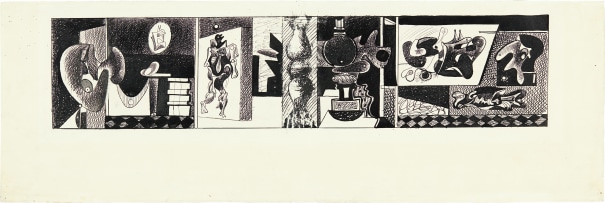
.jpg)
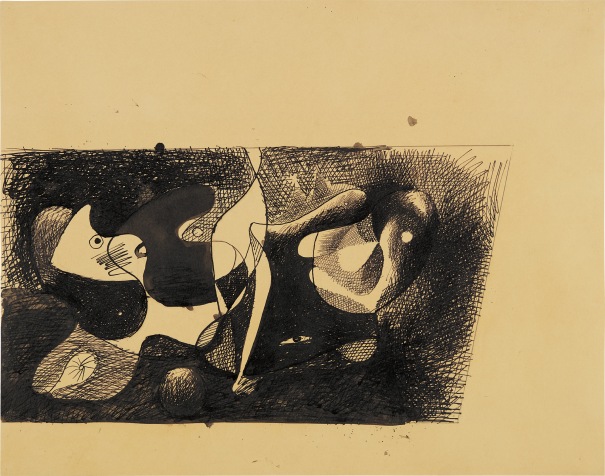
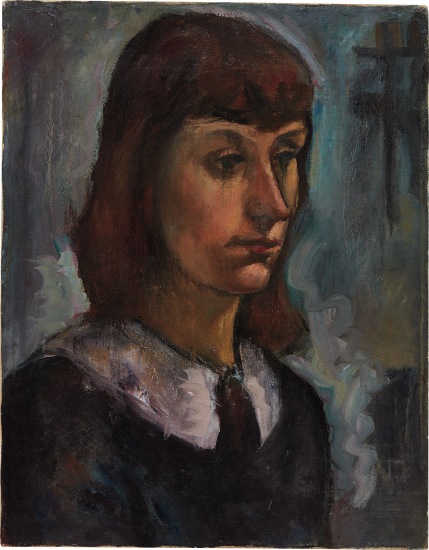

.jpg)

.jpg)
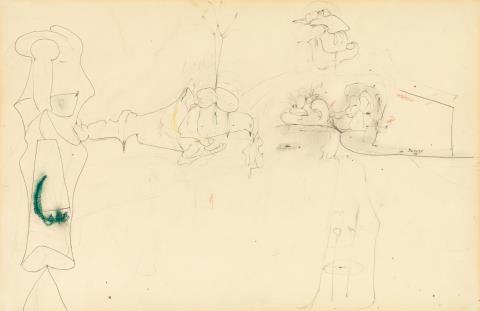

.jpg)
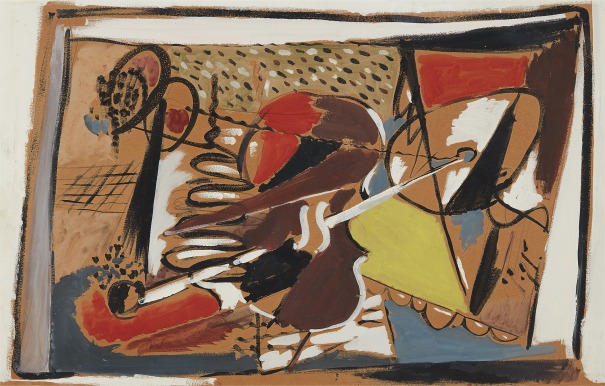
.jpg)
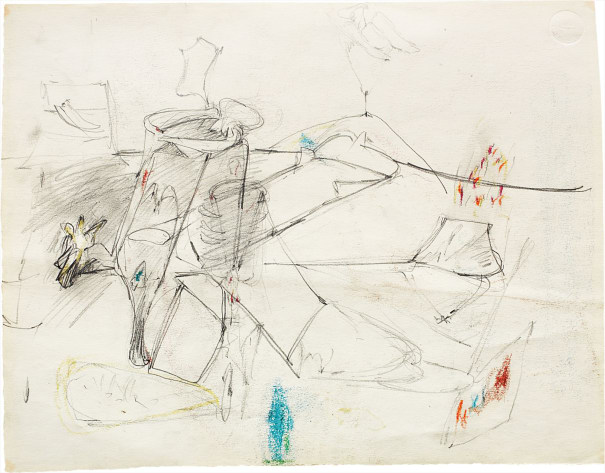

Try LotSearch and its premium features for 7 days - without any costs!
Be notified automatically about new items in upcoming auctions.
Create an alert